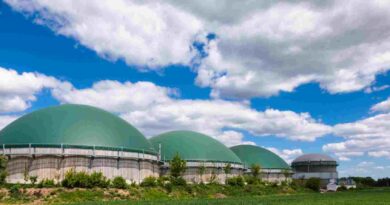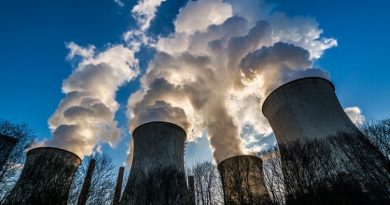Warning- Shutting Nuclear plants is hurting the Earth

The Global Energy and CO2 status report by the IEA was received with widespread cries of dismay and calls to do more, when it comes to global emissions. The report also highlights how India’s emissions grew the fastest among the top 5 global powers, despite the huge talk around renewables.
Perhaps the report could have been better titled, ‘No Better alternative to Nuclear Found yet”. Because, quite simply, if you check the report in detail, some very interesting facts come out.

For the period 2000 to 2018, while the share of global power generation from solar and wind installs grew 7%, nuclear generation actually declined, thanks to perception of risks around it, which has made it almost unviable. Interestingly, this viability issue is linked to decommissioning costs, rather than establishing, or operational costs. Thus, solar and wind, between them, just about covered up for replacing nuclear retirals. Coal, sustained mainly by increases in China and India went down only 1% over that time. That meant, the slack when it came to global growth in consumption had to be taken up by natural gas, whose share grew from 18 to 23%. Natural gas, for the record, is not really a ‘clean’ fuel as many people believe, though it is a full 50% ‘cleaner’ than coal. Some of the biggest switches to natural gas happened in the US and elsewhere, thanks to dropping prices, powered by shale gas discoveries. A factor that is still making it the favourite go to solution to manage rising demand.
Global electricity demand, for the record, grew at 2.3% last year.
Thus, worldwide renewables in solar and wind have basically managed to replace shuttering nuclear demand so far. And guess what, for all its risks and failings, nuclear power is also carbon free. Leaving the slow boil of the earth to continue on the back of unsustainable thermal and gas fired power generation.
That is one reason, the IEA, and the UN’s own models still can’t find an answer to the world’s demand without nuclear power. Even Japan, which had practically pledged to move away from nuclear power, shifted big time to gas, before being forced to open up four shut nuclear plants again, as gas simply became too expensive from both a cost, and environmental impact.
India, which is bound to come under increasing pressure if climate change accelerates, will literally feel the heat soon, as its dependency on coal fired power is absolute, at 60% even by 2030. In 2018, its carbon emissions grew over 6% according to the report, the highest among major economies. Not only has even the limited new nuclear capacity it planned for been delayed, talk now is that it might need to go for a lot more nuclear capacity, for a stable grid and supply.
As the world’s heating and cooling needs both hit new highs with every season, with extreme weather , this is not a challenge we can kick down the road anymore. With 100% electrification close to being achieved, we have at least a decade of steady demand growth in front of us, before energy efficiency methods reduce our energy intensity. Top metros like Delhi and Mumbai have already made growth projections look silly by exceeding numbers for the past few years, mainly due to increased cooling demand, as summers get hotter and longer, and air conditioning, cheaper. At this stage, urban planners or power planners for that matter, seem to have no answer beyond continued thermal generation.
With global nuclear suppliers like Westinghouse in trouble, the market is limited to a few players like Russia’s Rosatom, making it even more difficult to make a significant course correction towards nuclear power, limited or otherwise.
With almost 200 GW of nuclear plants scheduled to be shut over the coming period till 2040, the world is looking at a renewables capacity of over 600 GW in the same period, assuming existing efficiency levels, just to replace the retiring capacity. While that is doable, it still leaves open the question of the growth in demand during that period, and what will fill that. For now, India and China have decided that coal offers a way out, an answer that may no longer be the right or even acceptable answer, as early as 2025, if existing climate change predictions of a 2 degrees rise at this rate hold true.




